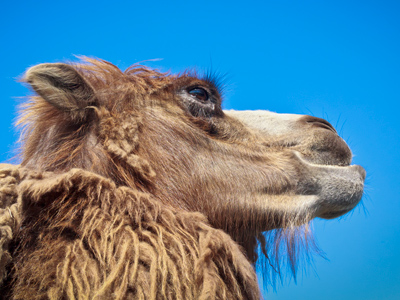
Ask the AI Tutor
Need help with Adaptation? Ask our AI Tutor!
AI Tutor - Lucy
Connecting with Tutor...
Please wait while we establish connection

An election was called for December 12th
Adaptation
Animals and plants adapt to survive. These adaptations may be structural, like a polar bear’s thick fur, or behavioral, like birds migrating south in winter…
1 .
On the day of the court ruling that Parliament’s suspension was unlawful, Boris Johnson was not in the country. Where was he?
New York
Paris
Monaco
Sao Paolo
Johnson was to give a speech before the United Nations General Assembly. When the ruling was announced, Johnson said that he disagreed with it but would abide by it. His speech, scheduled for the following day, was brought forward to the evening of September 24th
2 .
When Parliament reopened, some Conservative MPs questioned the independence of the judiciary. How did Jacob Rees-Mogg describe the court’s ruling?
As a judges' jacquerie
As a constitutional coup
As a tribunal takeover
As a regulatory revolt
Politicians questioning the independence of British courts was just one of the extremes that we started to witness almost every day, along with words such as “traitor”, “fascist” and “surrender bill”
3 .
Johnson was asked by MPs whether he would abide by the law and request an extension to Article 50. How did he respond?
He said he would
He said he would if he really had to
He said he would not
He said he would rather paint himself purple
He called the law the "Surrender Bill” and claimed he would not do as it commanded him to. In the end, he did obey the law
4 .
Threats of violence against politicians increased and many blamed Mr. Johnson’s choice of words. One MP asked him to moderate his language. How did the Prime Minister respond?
He said, "I have never said anything untrue”
He said, "I have never heard anything so silly”
He said, "I have never said anything the people are not thinking”
He said, "I have never heard so much humbug”
Tracy Brabin, the MP sitting in the former constituency of murdered MP Jo Cox, also asked the Prime Minister to moderate his language. He replied that the best way to honour the memory of anti-Brexit campaigner Cox would be to "get Brexit done"
5 .
The Government managed to negotiate a deal with the EU on October 17th. It was debated by parliament who voted for an amendment giving MPs time to examine it. What was the name of this amendment?
The Letwin Amendment
The Scrutiny Amendment
The Fifth Amendment
The EU Amendment
The amendment, tabled by Conservative rebel Sir Oliver Letwin, withheld Parliament's approval until legislation implementing the deal has been passed. This forced Mr. Johnson to ask the EU to delay Brexit until January 31st, 2020
6 .
Against his will, Boris Johnson was required by law to send a letter to the EU requesting a Brexit extension. He did send the letter, but how was it unusual?
He wrote it on toilet paper
He did not sign it
He wrote it in red ink
He drew a picture of a unicorn on it
Johnson also sent a second letter, saying that any further delay to Brexit would be a mistake. Nevertheless, the EU did indeed grant the request
7 .
Following the Brexit extension, Boris Johnson attempted to get parliament to agree to a General Election on December 12th. Opposition MPs tried to alter the date of the election - to when?
February 6th
January 31st
December 9th
November 28th
Labour, the Liberal Democrats and the Scottish National Party wanted the election to be held three days earlier than the Government’s preferred date. The reason was that students (who are mostly anti-Brexit) would be less able to vote on December 12th after universities have broken up for Christmas. The attempt failed
8 .
MPs finally agreed to Johnson’s demands for a General Election on December 12th. This became the first December General Election since when?
Since 1802
Since 1868
Since 1923
Since 1974
The 1923 General Election saw the first ever Labour Government after they gained the support of the Liberals in a hung parliament
9 .
The last Prime Minister’s Questions before the election took place, were held on October 30th. What was special about this?
It was the first PMQs to be televised
It was Boris Johnson's first ever PMQs
It was held on a Wednesday for the first time
It was the longest PMQs on record
The debate lasted for one hour and eleven minutes. They are scheduled for 30 minutes every Wednesday
10 .
The controversial Speaker of the House of Commons stood down on October 31st after 10 years in his position. What is his name?
Philip Hammond
Tim Farron
John Bercow
Alex Salmond
Prior to his election as Speaker, Bercow was a member of the Conservative Party. Despite this, he did not supported the Government. He would not allow Theresa May to put her Brexit deal before MPs for a third time, and he allowed a vote on an amendment to a government business motion
**Unlimited Quizzes Await You! 🚀**
Hey there, quiz champ! 🌟 You've already tackled today's free questions.
Ready for more?
Ready for more?
🔓 Unlock UNLIMITED Quizzes and challenge yourself every day. But that's
not all...
not all...
🔥 As a Subscriber you can join our thrilling "Daily Streak" against other
quizzers. Try to win a coveted spot on our Hall of Fame Page.
quizzers. Try to win a coveted spot on our Hall of Fame Page.
Don't miss out! Join us now and keep the fun rolling. 🎉
**Unlimited Quizzes Await You! 🚀**
Hey there, quiz champ! 🌟 You've already tackled today's free questions. Ready for more?
🔓 Unlock UNLIMITED Quizzes and challenge yourself every day. But that's not all...
🔥 As a Subscriber you can join our thrilling "Daily Streak" against other quizzers. Try to win a coveted spot on our Hall of Fame Page.
Don't miss out! Join us now and keep the fun rolling. 🎉






